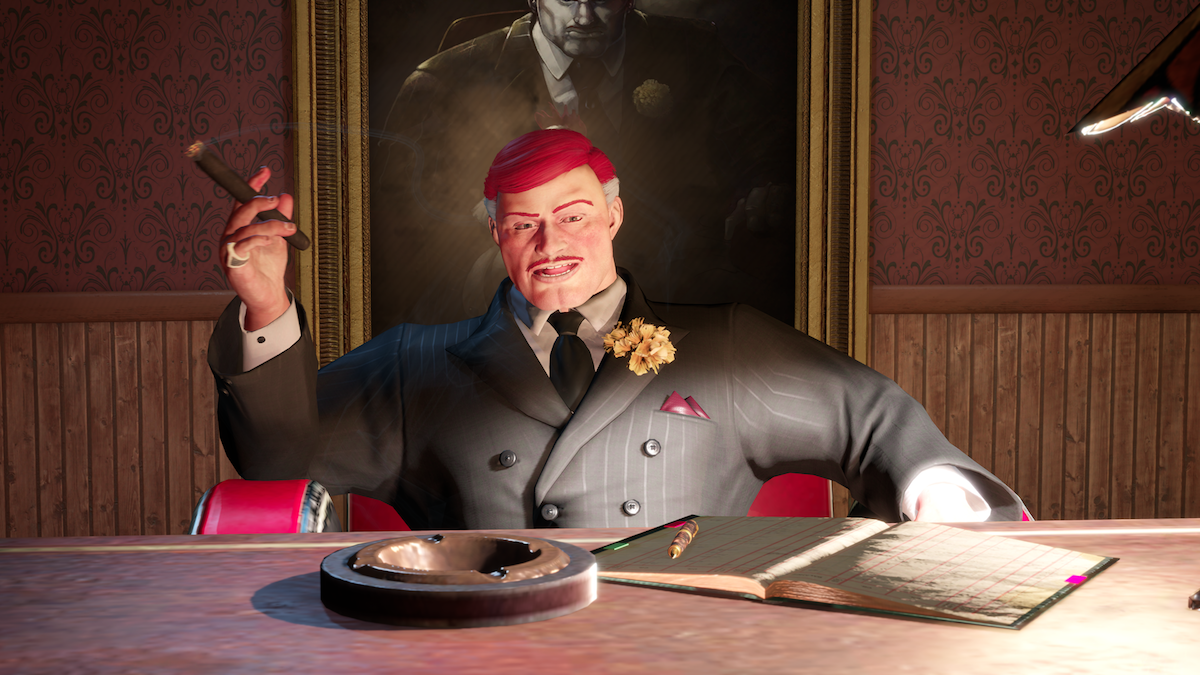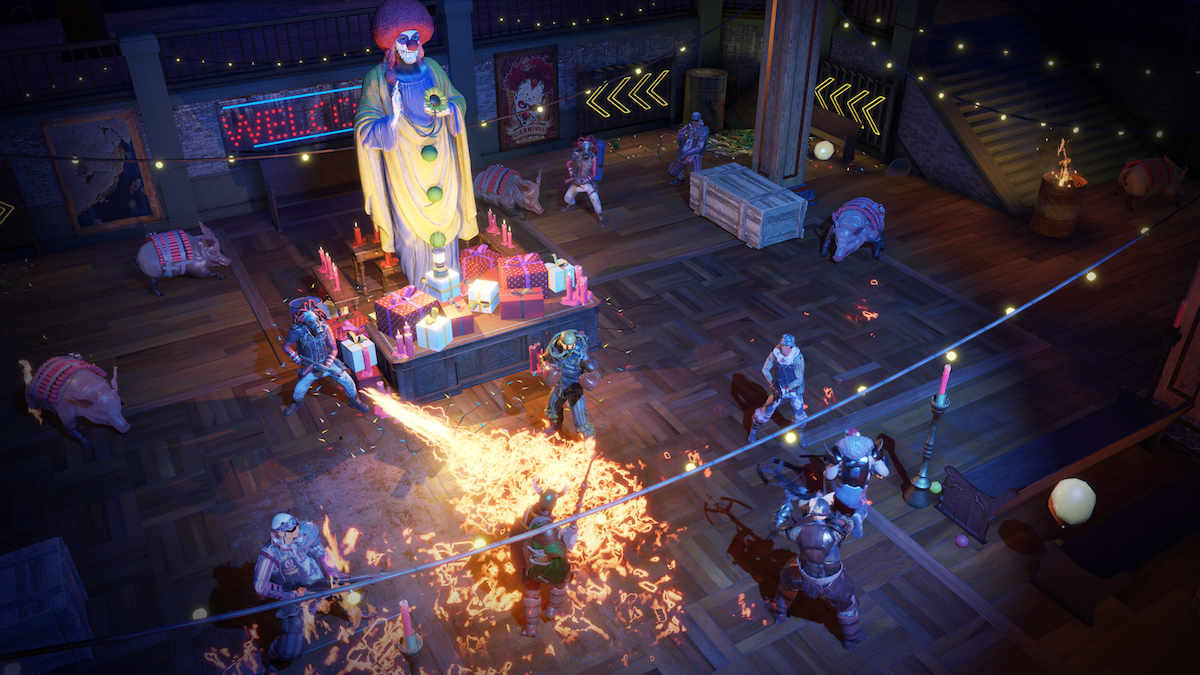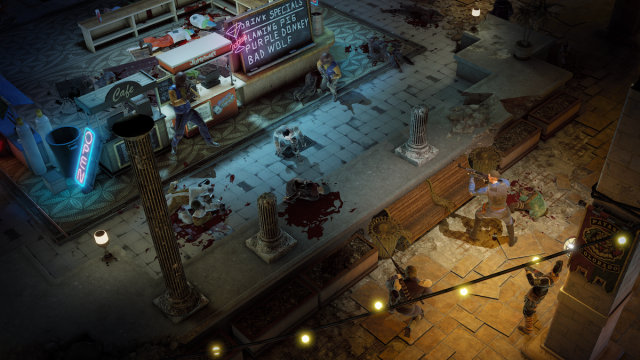Early on in Wasteland 3, you’re forced to make a choice. The family of one of your party members, a young woman named Lucia Wesson, was recently killed. An early quest has you stumble upon a camp of downtrodden apocalypse survivors, where you meet Lucia’s ex-boyfriend. Even if he didn’t technically pull the trigger, he’s directly responsible for the death of her family. You can let an incensed Lucia shoot the guy, you can shoot him yourself, or you can tell her to stand down.
This is my first Wasteland game; I clearly didn’t grasp the unpredictable nature of the series’ narratives, and was blindsided by what happened next. I let Lucia do her thing. Her ex-beau didn’t die immediately — in fact, the game went out of its way to inform me he’d have a slow and painful death — so I told her to put a bullet in his brain to put him out of his misery. That sparked a skirmish with the rest of the campers. A few minutes later, they were all dead.
This is my Wasteland 3 experience in a nutshell: At every turn, I’ve faced a staggering degree of choice with very little guidance as to what outcomes those choices beget. Did I want to slaughter a group of innocents? Absolutely not! But it happened anyway, and the game moved apace on its uncaring, cynical warpath. As a newcomer to Wasteland who isn’t going in with any expectations other than wanting to have a good time, I am a little disappointed with what I’ve played so far.
[referenced id=”664455″ url=”https://www.kotaku.com.au/2014/08/wasteland-2-could-be-the-proper-next-act-for-fallout/” thumb=”https://www.gizmodo.com.au/wp-content/uploads/sites/3/2014/08/06/d4q8zz18np446g3tzkqb-300×185.jpg” title=”Why You Should Care About Wasteland 2″ excerpt=”“There was this one moment in Fallout 3, when I came across a prisoner at some raider camp,” I said. “She was still tied up, but all the raiders were gone. Maybe they were dead or something, I don’t know. The game gave me a choice: I could take her…”]
Wasteland 3, out now for PC, Xbox One, and PlayStation 4 (where I played), is the latest in a standard-setting series of post-apocalyptic role-playing games. In 2012, after a decades-long hiatus, Wasteland zipped back into cultural consciousness. By then, Brian Fargo, the co-founder of Interplay and one of the key designers of that studio’s original 1988 Wasteland, had founded InXile Entertainment, which famously Kickstarted Wasteland 2 to “help bring back an entire genre of RPGs.” Wasteland 2 eventually came out for PC in September 2014, with PS4, Xbox One, and Switch versions released in subsequent years. The game was largely praised as a return to form for the genre, if a bit shinier than the clunky role-playing games from the ‘80s and ‘90s.

Wasteland 3 is a mix of tactical third-person shooter, deep role-playing game, isometric strategy game, and, to a degree, a management sim. You control a squad of up to six Rangers — basically, the paramilitary cops of the apocalypse — in a futuristic Colorado ravaged by decades of nuclear winter. Combat is turn-based; you move your party members around a grid-based battlefield, lining up and taking shots based on percentage chances, which hover over the heads of enemies and indicate how successful (or not) your attacks will be.
Unlike some recent tactical game games such as Gears Tactics, Wasteland 3 characters are governed by a truly dizzying array of stats, skills, attributes, and perks. You can pour points into an attribute called Luck, for instance, which increases something called Lucky Action Chance, but Wasteland 3 never explains what those actions of good fortune are. Levelling up Awareness increases your Perception, but to learn what that means, you have to dive into a submenu. Those are just two of the seven skills, and that’s to say nothing of the Quirks, permanent double-edged bonuses that buff one stat at the expense of another. Beyond that, there are 22 different skills. You can level up each one up to 10 times, which then opens up your access to skill-specific perks. Multiply this by your six squad members, and you can see how confusing things can get if managing stats isn’t your thing. At least in Gears Tactics, it’s clear that equipping a sniper rifle just means you can shoot things from really far away.
This staggeringly complex numbers game gives that sense that battles are dictated by your choices, yes, but also by an unknown degree of behind-the-scenes maths. Longtime series fans may understand what each and every stat means, and how exactly they impact battles. The same cannot be said for newcomers like me. Since Wasteland 3 forces you to allot points for all this stuff from the start — if you go the custom-character route, as many players of role-playing games are wont to do — it’s natural for rookies to feel like the game wasn’t meant for them. Imagine if you booted up a modern Fallout game and the S.P.E.C.I.A.L. skill allotment system was explained in the vaguest possible language. That these decisions, in Wasteland 3, lay the framework for two of your party mainstays is yet another hurdle for newcomers.
Thankfully, I’ve found that playing on the lowest difficulty counterbalances all of this confusion, to a degree. Wasteland 3 is playable in four standard difficulty settings. Wastelander is the standard difficulty. Rookie is the lowest. Neither of those have friendly fire turned on, meaning you can line up shots and toss explosives without risk. (The higher two tiers, Ranger and Supreme Jerk, come with friendly fire turned on. Absolutely not!)
Playing on Wastelander, even with friendly fire off, I’d get wiped half a dozen times per battle, without fail. I’d miss sniper shots pegged at 90-per cent chance of victory. Enemies would gang up on my weakest party members and knock them out before I got a chance to give them orders. I never really had a sense of how strong each foe was, how far they could travel, or what they would do. I certainly never grasped why I could only shoot once per turn but my enemies could shoot two or three times (or more). Some enemy soldiers have armour, and it never clicked, for me, why sometimes my bullets had no effect and sometimes pierced through. In one frustrating encounter, a group of pigs strapped with dynamite kept running into my team, killing two or three party members at a time. At every turn, I found myself sorely missing the overwatch feature from Gears Tactics and XCOM.

But turning things down to Rookie made fights a manageable, if still punishing, experience. Characters would get shot and still survive. They’d also dish out damage more predictably; enemy armour, especially, seemed less like a cumbersome, inexplicable wall between me and victory. Even when facing some explosive pigs, my party members still survived (mostly) intact. Switching the difficulty didn’t dissuade me from the belief that Wasteland’s complex world wasn’t made for a rookie like me — in fact, I still don’t fully understand how all these systems work — but at least I felt like I could survive in it.
Between battles, you’re given more or less free rein to explore the bombed out wasteland of Colorado, including the frozen remains of Aspen, Denver, and Colorado Springs. In towns and dungeons, you do things that you usually do in role-playing games: talk to people, fiddle with equipment, and loot everything in sight. Crates, dumpsters, lockers, frozen bodies — if you see it, you can probably rob it. My inventory, which appears bottomless, soon got cluttered with purposeless items that are broadly categorised as “junk.” It’s possible to sell all this stuff at the press of a button, but, in the absence of a careful inventory management system, I found myself wishing I could just pick it up in its purest form: cold, hard cash.
All six of your characters are present on screen at all times, which is a nice, if occasionally maddening, touch. If you choose to let the AI steer them instead of controlling them one-by-one, they’ll follow you, but they won’t stay in line. More times than I could count, my party members kept setting off enemy alarms or strolling directly into an enemy’s line of sight, triggering a battle before I could get a good setup going. So much for tactical planning. (This is another common situation where playing on the lowest difficulty has saved my skin more times than I care to admit.)
When you don’t control six disorderly humans, you pilot a tank-like vehicle called the Kodiak in the snowy overworld, where you can interact with travelling caravans and dodge radiation storms. You can also get jumped by random enemies. These events pull you out of the tank and back into grid-based, gun-slinging familiarity. Helpfully, in such battles, you control the Kodiak as if it’s one of your party members, and can use its massive gun to dish out some serious damage. Unhelpfully, the Kodiak can totally ruin your plans. When I first ordered the thing to the frontline, two of my squad members moved out of its way — and directly into the line of fire. Hey, you die and you learn, right?
All of this is wrapped in a meta-game of sorts. At the start of Wasteland 3, your boss, a dude named “The Patriarch” tasks you with finding his three disobedient children. One’s taken over Aspen with a small army. One’s holed up in Denver, and has cut off the oil supply to Colorado Springs, the Patriarch’s homebase. The third has disappeared without a trace.
To help in your three-pronged, open-ended quest, the Patriarch gives you the keys to a defunct Air Force base. This serves as the new Ranger headquarters, and you can staff it up with various specialists. Most are standard-issue army staff — a jailor, a quartermaster, a mechanic — but, after one side quest, I recruited a physicist who happens to be an expert in the science of cloning. (I’m not sure yet what practical purpose this serves. It’s just cool as heck.) Though the recruitment and management system isn’t terribly deep, it’s still satisfying to see your ranks swell in real time.
At Ranger HQ, you can also recruit new members into your party. These characters are where I started to see some cracks in this otherwise well-realised world, mainly as a result of how people talk. Seemingly every other line of dialogue in this game has a “fuck” or a “fucker” or a “fucking” or some other swear word in it. There’s nothing wrong with profanity, but in Wasteland 3, it felt to me like a crutch. I sometimes felt like the game used it merely to make up for an absence of more clever dialogue. This is a game where the Stealth stat is instead called “Sneaky Shit,” for crying out loud.
There are also moments where the language veers directly into offensive territory. I was turned off by a pantsless, stuttering character named “Shakes” in a nightclub called Little Vegas. Shakes needs help retrieving a lost stash of drugs. Their moniker, if I’m correctly understanding the “joke,” is meant to mock the fact that people who use drugs might stutter during withdrawal, something that’s underscored by the fact that you can respond by calling him a “poor little twitch-head.” Showcasing a character suffering from withdrawal is of course totally within bounds. Portraying them one-dimensionally, and using them as a butt of a joke, is not. That such downward-punching dialogue is present in a game released this year — years past the statute of limitations for not knowing any better — is downright baffling. We simply shouldn’t accept it when reductive language is used to describe any fellow human, apocalypse be damned.
It all contributes to the unmistakable feeling that Wasteland 3 is a creature of the past. This is likely intentional; Wasteland 3 is, of course, more Wasteland. If you’re a diehard series fan, as many people clearly are, you might find it all enough to keep you going through an 80- to 100-hour adventure. In series tradition, there are many, many endings, based on the various choices you make from tip to tail. As a newcomer, it’s a longshot that I’ll see even one of them.

Leave a Reply